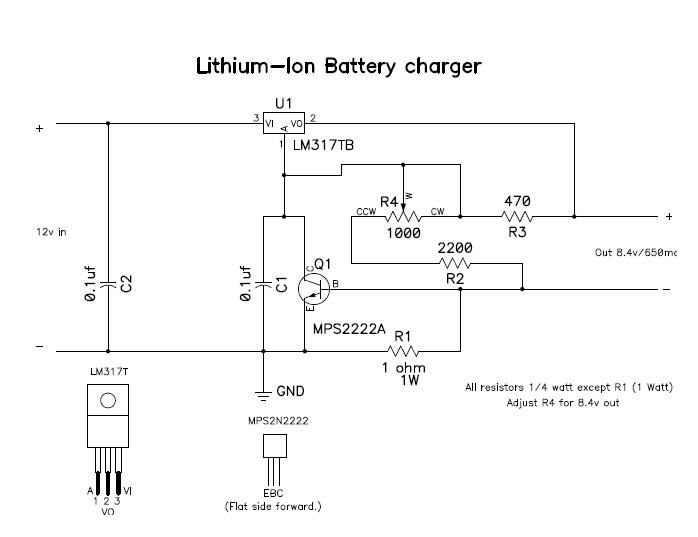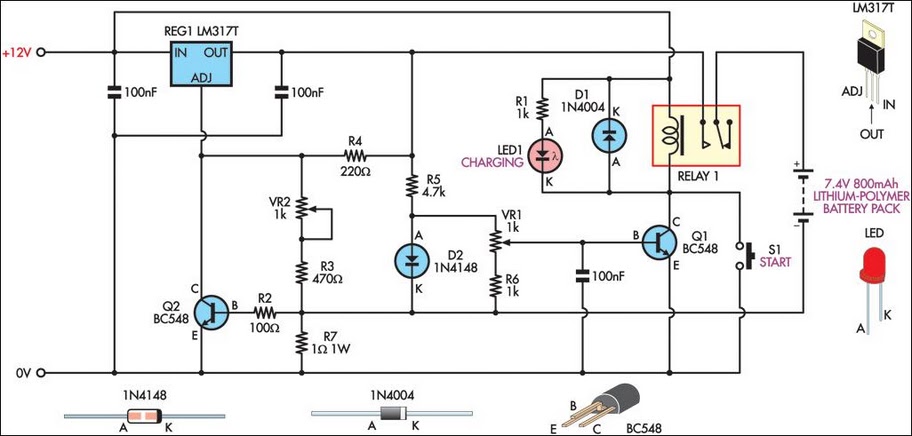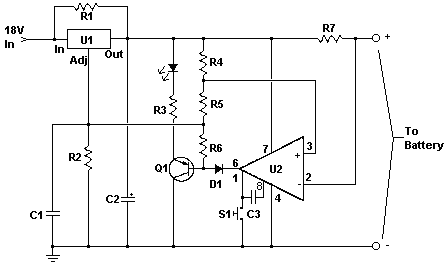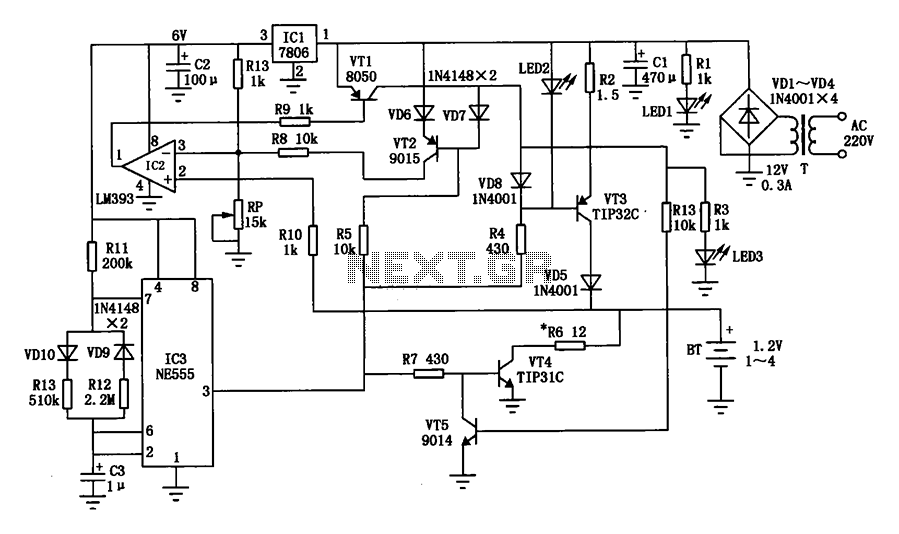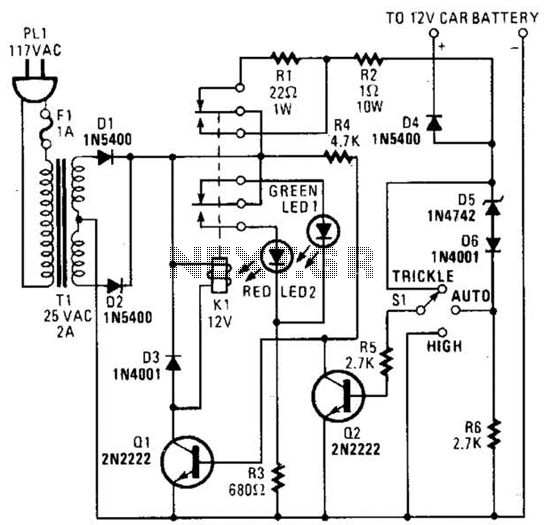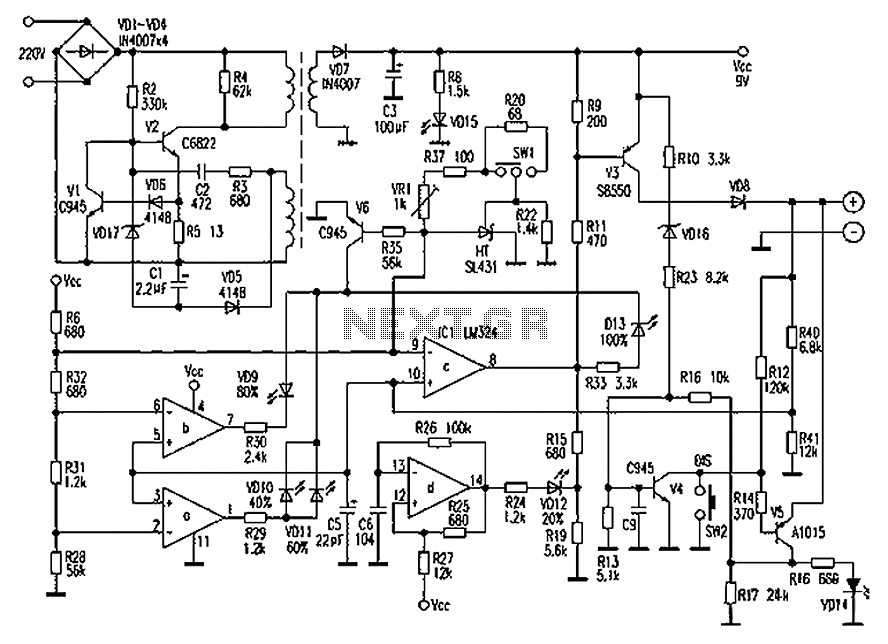
NiCad Charger IV

This zapper clears internal shorts in nickel-cadmium batteries by burning them away. CAUTION: The negative battery terminal is connected to one side of the AC line. For safe operation, use a 1:1 isolation transformer.
The described device, commonly referred to as a battery zapper, functions by applying a high-voltage pulse to a nickel-cadmium (NiCd) battery to eliminate internal short circuits. The internal shorts often arise due to dendrite formation or other degradation mechanisms within the battery cells, which can lead to reduced performance or complete failure.
The zapper operates by connecting the negative terminal of the battery to one side of the AC line. This configuration necessitates caution as it poses a risk of electrical shock or damage to the device and the user if not handled properly. To mitigate these risks, the implementation of a 1:1 isolation transformer is recommended. This transformer provides electrical isolation between the input power source and the output, ensuring that the user does not come into direct contact with potentially dangerous voltages.
The circuit typically includes components such as high-voltage capacitors, diodes, and a triggering mechanism that can be activated to discharge a controlled pulse of energy through the battery. The energy pulse effectively burns away the short circuit, allowing the battery to regain functionality.
When designing such a circuit, it is crucial to consider the ratings of all components to withstand the high voltages involved. Additionally, safety features should be incorporated, such as fuses or circuit breakers, to prevent overcurrent situations that could lead to catastrophic failures. Proper heat dissipation mechanisms should also be included to handle the thermal energy generated during the operation of the zapper.
In conclusion, while a battery zapper can be an effective tool for restoring functionality to NiCd batteries with internal shorts, it must be designed and operated with strict adherence to safety protocols to prevent accidents and ensure reliable performance.This zapper clears internal short in nickel cadmium batteries by burning it away. CAUTION: The negative battery terminal is connected to one side of the ac line. For safety operation use a 1:1 isolation transformer.
The described device, commonly referred to as a battery zapper, functions by applying a high-voltage pulse to a nickel-cadmium (NiCd) battery to eliminate internal short circuits. The internal shorts often arise due to dendrite formation or other degradation mechanisms within the battery cells, which can lead to reduced performance or complete failure.
The zapper operates by connecting the negative terminal of the battery to one side of the AC line. This configuration necessitates caution as it poses a risk of electrical shock or damage to the device and the user if not handled properly. To mitigate these risks, the implementation of a 1:1 isolation transformer is recommended. This transformer provides electrical isolation between the input power source and the output, ensuring that the user does not come into direct contact with potentially dangerous voltages.
The circuit typically includes components such as high-voltage capacitors, diodes, and a triggering mechanism that can be activated to discharge a controlled pulse of energy through the battery. The energy pulse effectively burns away the short circuit, allowing the battery to regain functionality.
When designing such a circuit, it is crucial to consider the ratings of all components to withstand the high voltages involved. Additionally, safety features should be incorporated, such as fuses or circuit breakers, to prevent overcurrent situations that could lead to catastrophic failures. Proper heat dissipation mechanisms should also be included to handle the thermal energy generated during the operation of the zapper.
In conclusion, while a battery zapper can be an effective tool for restoring functionality to NiCd batteries with internal shorts, it must be designed and operated with strict adherence to safety protocols to prevent accidents and ensure reliable performance.This zapper clears internal short in nickel cadmium batteries by burning it away. CAUTION: The negative battery terminal is connected to one side of the ac line. For safety operation use a 1:1 isolation transformer.
